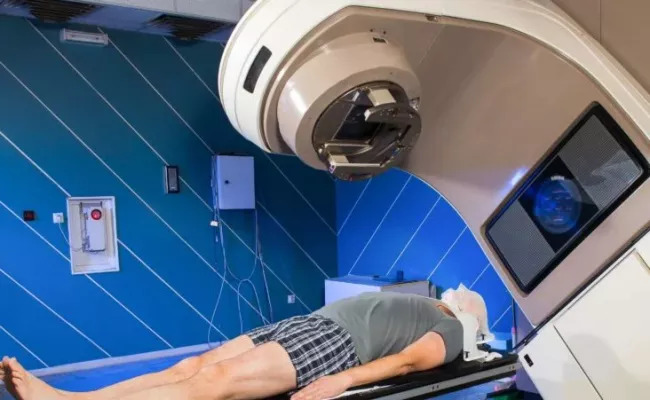Understanding The Different Types Of Radiation Therapy
When it comes to cancer treatment, one of the most successful and often utilized choices is radiation therapy. According to the American Cancer Society (ACS), radiation therapy is used in the treatment of more than half of all cancer patients.
But, because there are so many distinct types of radiation, it’s critical that patients understand the differences between them.
The Most Frequent Radiation Treatment Types
For many forms of cancer, radiation therapy is a popular and successful treatment option.
There are various types of radiation therapy, each with its own set of benefits and drawbacks.
This article will look at the various types of radiation therapy used in cancer treatment.
Radiation Treatment using External Beams
The most prevalent type of radiation therapy used in cancer treatment is external beam radiation therapy (EBRT).
It works by sending high-energy radiation beams to the tumor spot via a machine.
The machine is commonly referred to as a linear accelerator or linac for short.
This sort of therapy is often administered as an outpatient over a period of many weeks, with each session lasting only a few minutes.
There are various forms of EBRT, including:
Three-Dimensional Conformal Radiation Treatment (3D-CRT): This type of therapy creates a 3D image of the tumor and surrounding tissue using modern imaging equipment.
This allows radiation beams to be precisely targeted at the tumor while exposing as little healthy tissue as possible.
Intensity-Modulated Radiation Treatment (IMRT): A computer-controlled system is used to deliver accurate radiation beams of varied intensity.
This enables even more precise tumor targeting while reducing exposure to surrounding tissue.
Image-Guided Radiation Treatment (IGRT): This type of therapy guides the delivery of radiation beams to the tumor using advanced imaging technologies.
This enables considerably better precision and accuracy in tumor targeting.
Internal Radiation Treatment
Internal radiation therapy, also known as brachytherapy, is injecting radioactive material into or around the tumor.

This sort of therapy is generally used to treat tumors in regions where external radiation is difficult to reach, such as the prostate or cervix.
Internal radiation therapy is classified into two types:
High-Dose-Rate (HDR) (HDR) Brachytherapy is a type of therapy in which a small, temporary radioactive source is placed directly into or near the tumor for a brief period of time, usually only a few minutes.
Low-Dose-Rate (LDR) Brachytherapy:
This treatment includes inserting a small, permanent radioactive source directly into or near the tumor for an extended period of time, usually many days or weeks.
Radiation Treatment for the Whole Body
In systemic radiation therapy, also known as radiopharmaceutical therapy, radioactive material is injected into the bloodstream.
The chemical then spreads throughout the body, identifying and eliminating cancer cells wherever they are found.
Systemic radiation therapy comes in a variety of forms, including:
Radioactive Iodine Therapy:
This is a common treatment for thyroid cancer.
The patient is given radioactive iodine, which is absorbed by the thyroid gland and kills cancer cells.
Targeted Radionuclide Therapy:
This type of therapy employs a radioactive substance that is specifically designed to target specific types of cancer cells while exposing healthy tissue to the least amount of radiation.
Systemic Radiation Therapy for Bone Metastases:
A radioactive substance is injected into the bloodstream to target cancer cells that have spread to the bones.
Different Kinds of Radiation Treatment
Aside from the three main types of radiation therapy, some alternative types of radiation therapy are gaining popularity in the world of cancer treatment due to their incredible efficacy.
Proton Therapy: This type of therapy uses positively charged protons to deliver radiation to the tumor.
Because it can deliver radiation with greater precision and accuracy than traditional radiation therapy, proton therapy is frequently used to treat tumors that are close to sensitive organs such as the brain or spinal cord.
“Proton therapy is a highly specialized, cutting-edge form of radiation treatment,” according to the University of Kansas Cancer Center.
“It precisely targets tumors while sparing surrounding tissues by delivering radiation directly to the tumor with a pencil-thin beam of protons.”
Proton therapy is particularly popular in young children because it reduces radiation exposure to other healthy, growing tissues (thereby reducing the risk of future complications).
SBRT (stereotactic body radiation therapy) involves delivering high doses of radiation to the tumor from a variety of angles.
It is commonly used to treat tiny tumors that are difficult to reach with other forms of radiation therapy.
Electron Beam Therapy: This type of therapy delivers radiation to the tumor using high-energy electrons.
It is frequently used to treat superficial tumors like skin cancer.
Also, read David James Elliott, Igby Rigney, Milton Barnes
Which Radiation Treatment Is Best For You?
The best type of radiation therapy for you will be determined by various criteria, including the location and size of your tumor, the stage of your cancer, and your overall health. Your radiation oncologist will collaborate with you to develop the optimal treatment plan for your specific needs.
It is crucial to understand that radiation therapy might cause fatigue, skin irritation, and nausea.
These negative effects, however, are usually quite transitory.
They are virtually usually (at least to some extent) manageable with supportive medication and modest lifestyle adjustments.
Your radiation oncologist will work with you to reduce these side effects and keep you as comfortable as possible during treatment.




